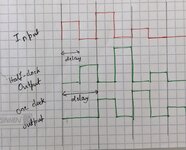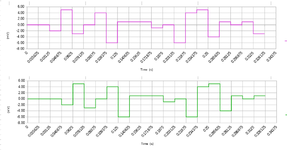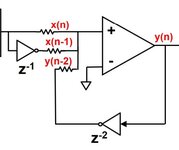Shishira
Junior Member level 2
- Joined
- Jun 8, 2018
- Messages
- 20
- Helped
- 0
- Reputation
- 0
- Reaction score
- 0
- Trophy points
- 1
- Location
- Dresden, Germany
- Activity points
- 228
Hi All,
I want to introduce a delay of half and one clock period in an analog circuit. I need an element/circuit that can produce half-clock period in real circuit to be taped out. I cannot use a D flip flop as the output needed is an amplitude varying square signal. (atch 2). Looking forward to ideas..
I want to introduce a delay of half and one clock period in an analog circuit. I need an element/circuit that can produce half-clock period in real circuit to be taped out. I cannot use a D flip flop as the output needed is an amplitude varying square signal. (atch 2). Looking forward to ideas..


